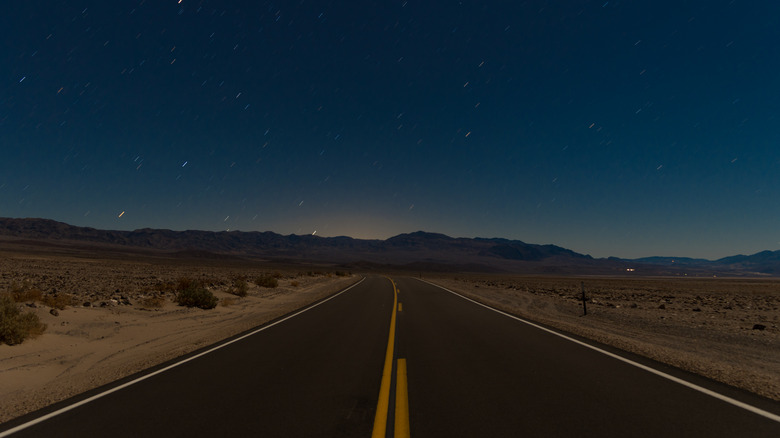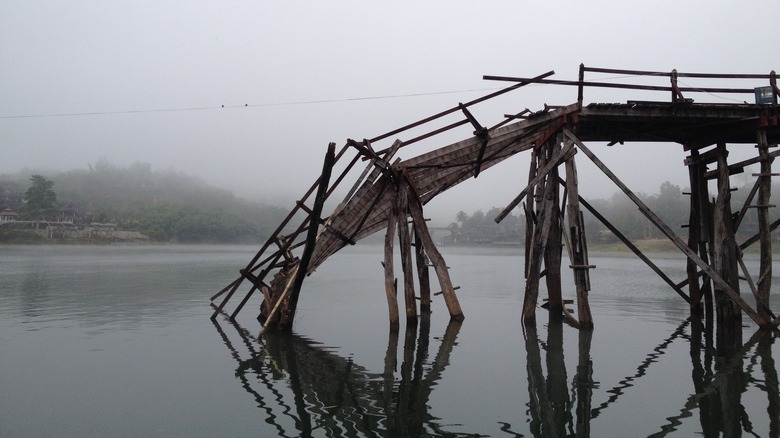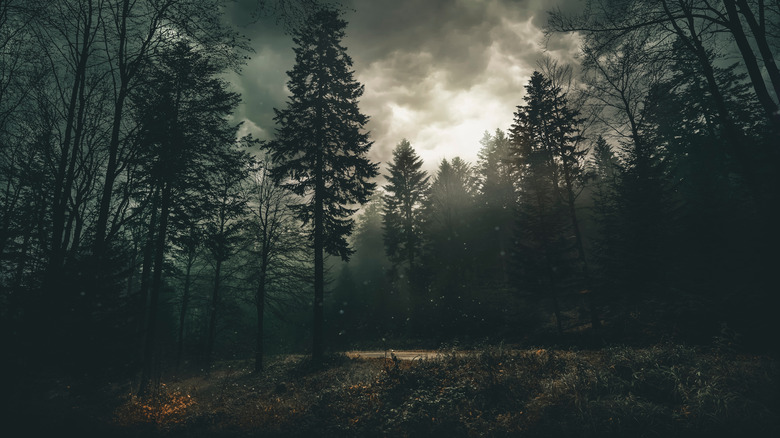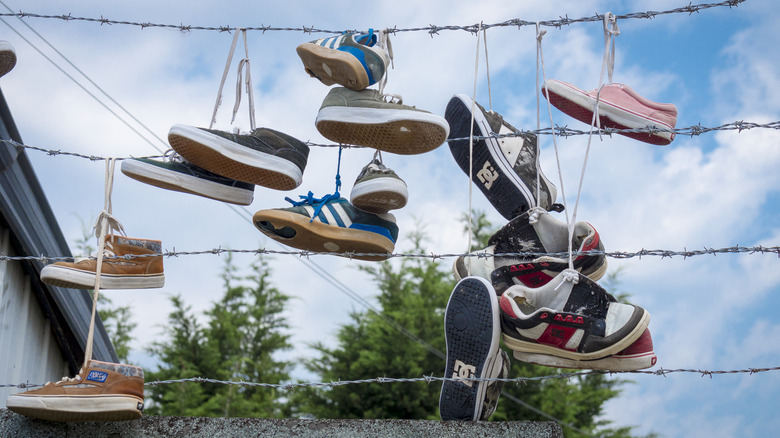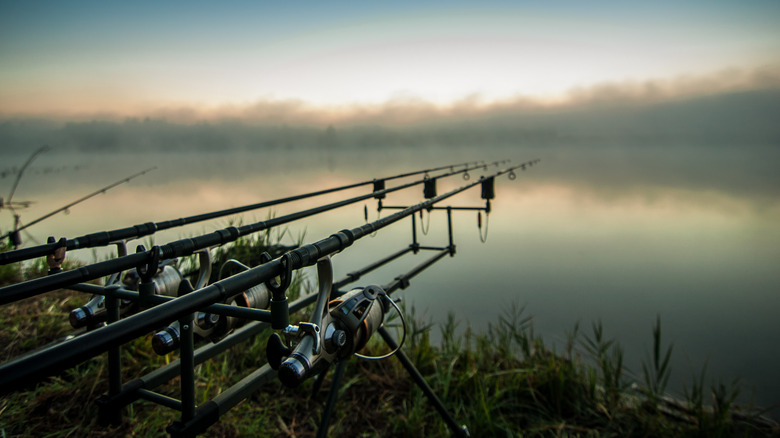Terrifying Real-Life Examples Of Death By GPS
Twenty years ago, getting around was a whole lot more complicated. Directions were often provided by the person whose house you were visiting. Rarely did they contain precise street names and distances from one point to the next. Often, they were a myriad of landmarks strung together to create one long, incoherent sentence telling you to turn at the old tree where the beehive used to sit, head straight down past Blockbuster, and swing a right at the building that used to be a high school, etc.
When global positioning systems, or GPS, became accurate enough to become available for the masses (via Cnet), suddenly navigation was like magic. You plug the address in, the computer silently ushers several routes onto the screen, a digital voice greets you, and before you know it, you have been guided seamlessly to your destination of choice. Arrived.
But, we've all been there — those rare occasions when you haven't really arrived at your chosen destination although the GPS keeps insisting that you have. For most people, the blunder is slight, and they are able to find the right path after a few minutes of circling and aggravation. However, NPR reports that's not always the case. There have been instances when this popular digital travel companion has guided people straight into death traps and they were never to be heard from again.
A camping trip turns deadly for a lost little boy
According to NPR, Death Valley, California takes its name from the perilous backroads that sent one wagon train into oblivion on an ill-fated journey to find a shortcut. Despite the inception of modern tech like GPS navigation, those same roads continue to befuddle travelers to this day. Death Valley Ranger Charlie Callagan told NPR that he's personally witnessed several instances of tourist drivers in the region getting dangerously lost, embarking on journeys over closed or dilapidated roads, and, in extreme cases, being unable to find their way back for days.
One such journey turned fatal for a 6-year-old boy named Carlos who got lost in Death Valley with his mother Alicia Sanchez in 2009 (via Method Shop). It began with one wrong turn, as the GPS guided Sanchez down the wrong road. It ended in a five-day trek to get back on track. Sadly, the 6-year-old little boy died of dehydration before the park ranger discovered the pair, slumped and thirsty in the throes of the desert heat.
The mother survived to tell the tale, but her life will forever be imprinted by this tragedy. Since then, camp ranger Callagan has been working with major corporations to rectify outdated info appearing on digitized Death Valley maps. Thus far, he has discovered and corrected a jaw-dropping 150 roads, NPR reported.
A couple drives right off an out-of-order bridge
Another tragic event that began as a simple wrong turn took place in March of 2015 when a man by the name of Iftikhar Hussain fell victim to misinformation fed to him via GPS navigation (via Method Shop). Hussain had taken his wife and his Nissan Sentra on a drive through Lake County, Indiana which would soon have deadly consequences.
While en route, the navigation system suggested the couple take the Cline Avenue Bridge. According to ABC 13, the bridge was barricaded by orange cones and concrete barriers and had been closed since 2009. Signs warned that the bridge ahead was closed. Still, trusting the GPS, Hussain proceeded to drive off the ramp of the dilapidated bridge, plummeting nearly 40 feet, the journey ending in a fiery crash. Hussain, 64, survived the incident but his wife, 51, did not. The calamity expedited the construction of a new bridge, but the problem of the GPS itself carries on.
Route goes from scenic to deadly for one ill-fated couple
In 2011 a case of death by GPS took place along the scenic route in a lush region of Northern Elko County, Nevada (per CBC News). When Albert and Rita Chretien departed from their Penticton, British Columbia home in their Chevrolet Astro minivan, they anticipated an adventurous road trip through rural Nevada that would end in them attending a Vegas convention.
Their efforts to take the scenic route guided by the GPS ended catastrophically when the navigation system instructed them to travel high into the desert mountains and canyons. According to Method Shop, their minivan subsequently malfunctioned, rendering them stranded in the remote mountainside, inciting a two-year, multi-city search for Albert that ultimately ended in them recovering his remains. Miraculously, his wife, Rita Chretien, survived for nearly two months in the isolated mountain region on a diet consisting mostly of snow, trail mix, and small pieces of candy (via Oregon Live). She was found by hunters just as she had resigned herself to death.
In a chilling retelling published by CBC News, she explained that her husband had left after the third day, in search of help and never returned. Upon uncovering Mr. Chretien's body, Sheriff's Deputy David Prall remarked, "this man had tremendous courage and inner strength to get where he was".
Waze app lures unsuspecting drivers into gang territory
Method Shop reports that plans for a beach dinner in 2015 turned deadly when a husband and wife attempted to navigate the backroads of Brazil using the Waze app. They intended to meet up with their daughter and enjoy a family meal in Rio De Janeiro. The Waze app is a bit more intense than most navigational programs. It relies on community-based information to relay the fastest possible route and it usually does so with much precision. Notedly, Waze makes use of many off-the-beaten-path locations to get drivers where they need to be in a timely manner.
However, in this particular case, the app sent 70-year-old Regina Murmura and her 69-year-old husband Francisco directly into harm's way through a road that was notoriously gang territory (via Daily Mail). When drug traffickers opened up a blaze of gunfire on the couple, the wife was murdered and the husband only narrowly survived.
A fishing trip goes horribly wrong
Fishing went from a leisurely activity to lethal one for one unfortunate man by the name of Silas Wrigley (via Method Shop). According to the Argus Observer, he might not have actually been misled during the journey. Rather, the error seems to have occurred after he missed a turnoff and wound up on a road so rough even local law enforcement encountered issues trying to move the vehicle. To make matters even more perplexing, Mr. Wrigley had a paper map in his possession and had clearly marked the trail he wished to travel. Even so, he wound up stranded in his pickup on an off-the-beaten-path location mere miles from his intended locale. He was missing for a week before his body was found a couple of miles from his truck.
These stories, while haunting, have sparked a movement to improve the accuracy of digitized navigation and to discourage over-reliance on modern technology. Experts advise always traveling with a map, a compass, and plenty of emergency supplies on hand.

